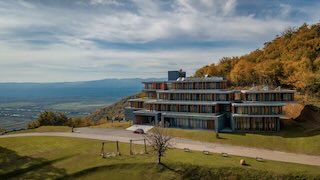TOKYO, Mar 05 (News On Japan) - The latest cherry blossom forecasts are in, and artificial intelligence (AI) has taken it a step further, predicting what the cherry blossom scene will look like 80 years from now, in 2100. Surprisingly, some regions may not see any blooms at all.
The focus is on the Somei-Yoshino cherry trees, a beloved variety in Japan. The latest forecast, announced on March 4, reveals that Tokyo is expected to see the first blossoms on March 18.
This year, the warm winter has accelerated the blooming across the country, raising questions about the best time for cherry blossom viewing. Full bloom in Tokyo is predicted for March 28, with Nagoya and Fukuoka following closely on March 30 and 31, respectively.
In the 1960s, Tokyo's Somei-Yoshino cherry trees typically reached full bloom around April 6, coinciding with entrance ceremonies. By the 1990s, the peak bloom had moved to around April 3. In the last decade, full bloom has mostly occurred by March 27. Over 60 years, the peak bloom has advanced by more than a week, a change attributed to global warming.
The Japan Meteorological Agency's recent meeting on abnormal weather analysis also highlighted the likelihood of continued warm winters due to climate change. So, what does the future hold for Somei-Yoshino cherry blossoms? AI forecasts for 2100 show Tokyo's bloom date around March 21, slightly later than this year's prediction of March 18.
However, the situation in Kyushu is concerning. Nagasaki, Miyazaki, and Kagoshima are all predicted to experience no blooms. The mechanism behind this is that Somei-Yoshino trees enter dormancy in autumn and rely on the cold of winter to awaken. Warmer winters disrupt this process, leading to a lack of blooming.
In Tokyo, the overall rise in winter temperatures is expected to delay the trees' awakening, but the warmer conditions also hasten the blooming process once they are awake. If global warming continues at its current pace, there's a possibility that cherry blossoms may become a rare sight in Tokyo.















